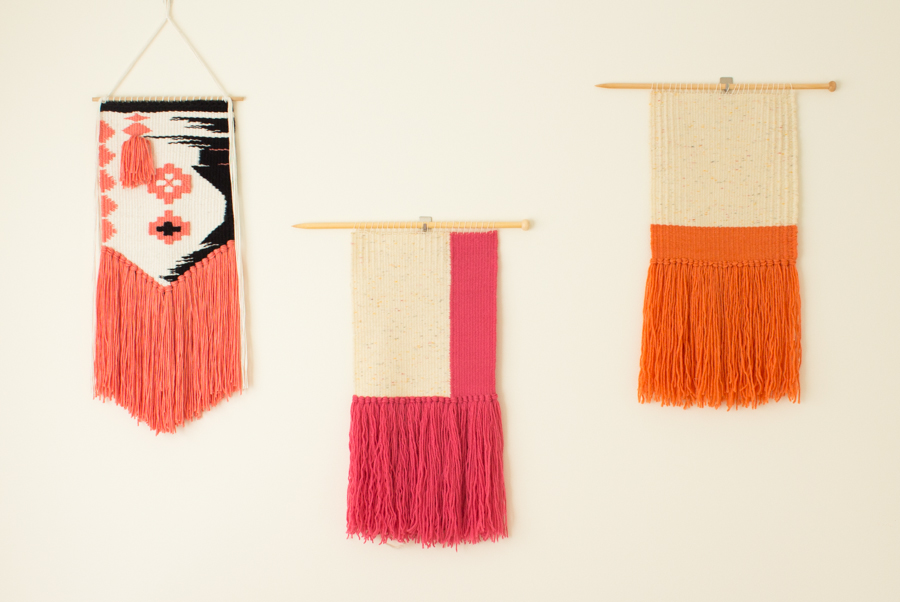In this post I’ll explore some basic weaving techniques that will help get your first weaving project started. I also have some tips on how to prevent one of the most common problems that all new weavers will experience.
Getting Started With Plain Weave
Plain weave, also referred to as tabby weave or tabbing, is one of the oldest and most basic weaving techniques. You'll find that it forms the basis of most projects and through incorporating colour and texture the design possibilities of plain weave are endless. Here are a few examples of wall hangings that use plain weave as their foundation.
Plain weave is formed by passing a thread, referred to as the weft, horizontally over and under alternating warp threads. As you repeat this pattern over every row a strong woven fabric is formed.
There are several methods for conveniently carrying your weft yarn across the warp. The simplest method is to tie your yarn into a butterfly bobbin (shown below) and lift warp threads by hand as you pass the bobbin across the fabric. A large blunt tapestry needle is also useful when working on small or detailed areas as it allows you to quickly pass the needle over and under warp threads. More specialised tools include tapestry bobbins, shuttles and weaving sticks. I'll cover weaving tools in more detail in a future post.
Getting the Weft Right
As you begin weaving you might find that the selvage, or edge of the fabric, has a tendency to draw in and tighten. It’s a common problem that many weavers experience and is generally caused by the weft thread being pulled to tightly across the warp. The problem is easily remedied with a few simple techniques and a bit of practice.
The photos below illustrate different techniques for passing the weft across the fabric:
Slanting
Arching
Bubbling
Once you’ve made your slant, arch or bubble proceed by carefully beating the weft into place with your fingers or a weaving comb.
With a bit of practice and a little bit of patience you’ll have straight salvages in no time. If your slanting, arching or bubbling results in to much ease and the salvage loops are a bit bubbly you can carefully pull the threads back in place from behind the work.

















